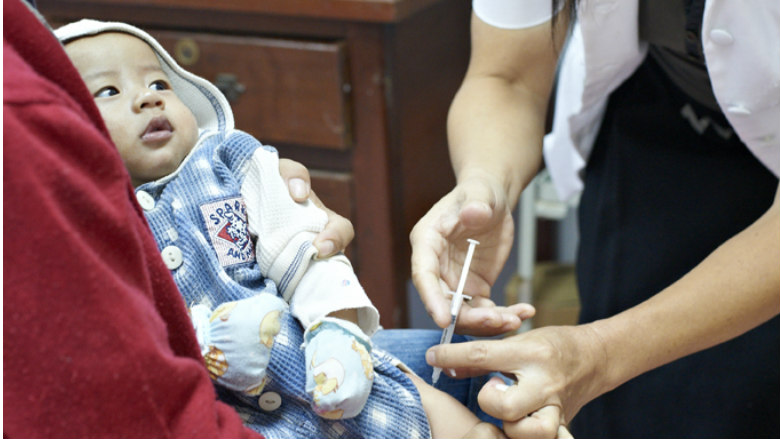Key Findings
There has been a steady improvement in immunization coverage in Lao PDR since 2010.
- Immunization coverage rates for Diptheria-Pertussis-Tetanus increased from 74% in 2010 to 82% in 2016.
- Coverage of single measles vaccination at 9 months increased from 64% in 2010 to 76% in 2016.
Despite this progress, there are wide inequities in immunization coverage.
- Inequities span across economic, urban-rural, geographic, and ethnic dimensions.
- The immunization coverage for the poor is less than one-half that of the richest income group.
- There is a high dropout rate for immunization, especially in rural areas with predominantly ethnic minority populations.
Spending on routine immunization in Lao PDR has increased considerably--from less than $5 million annually in 2007-13 to $24.8 million in 2016.
- The cost of vaccines accounts for the largest share of total expenditure on routine immunization: $11.4 million or 45% of total routine immunization spending in 2016
- Spending is expected to continue to increase, due to the country’s plan to introduce new vaccines, human papillomavirus (HPV) and rotavirus, and increase coverage.
- Increased spending has largely been made possible due to funding from the international organization Gavi, the Vaccine Alliance, which supported more than half of financing for new and underused vaccines in the country from 2010-2014.
- However, in 2017, Lao PDR entered the final phase of Gavi support, and will fully transition from Gavi support in 2022.
- Lao PDR also expects declining external financing from other donors as it prepares to transition from Least Developed Country Status by 2020.
- Domestically financed immunization expenditure will therefore need to increase significantly over the next 5 years.
Moving forward, several possibilities to streamline and sustain immunization are recommended as priority areas.
- Ensure sustainable financing for immunization within the context of financing for Universal Health Coverage (UHC).
- Increase efficiency by mainstreaming program functions that are currently managed differently for different donors (e.g. supply chain management, data management, financing and reporting, integrated outreach and supervision).
- Provide targeted financial and technical support to districts with below average coverage.
- Ensure Mother and Child Health home records for immunization and immunization coverage are made available at every level.
- Conduct research to identify the most effective mix of facility-based and outreach health services to increase coverage and reduce inequality.
- Undertake a study to understand both service availability and demand side constraints.
- Shift from input-based to performance-/results-based planning and financing for greater focus on results.
